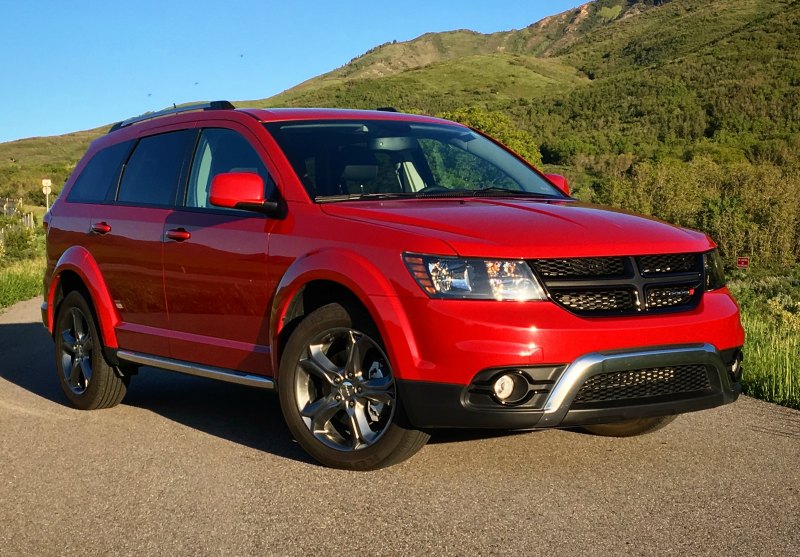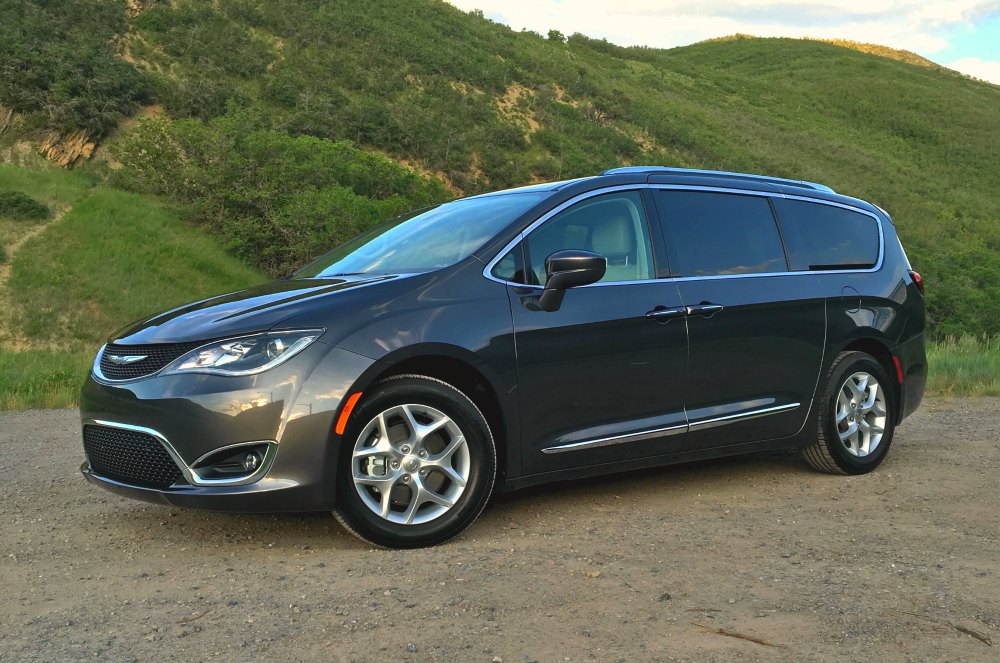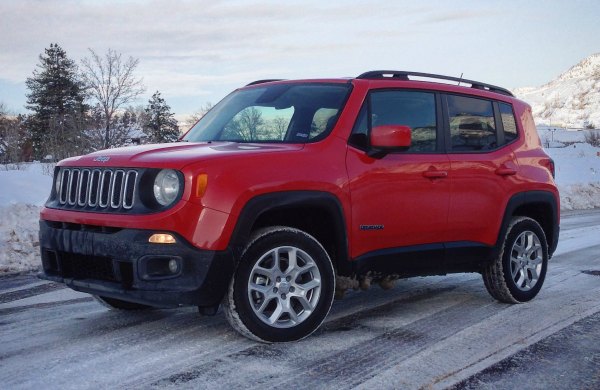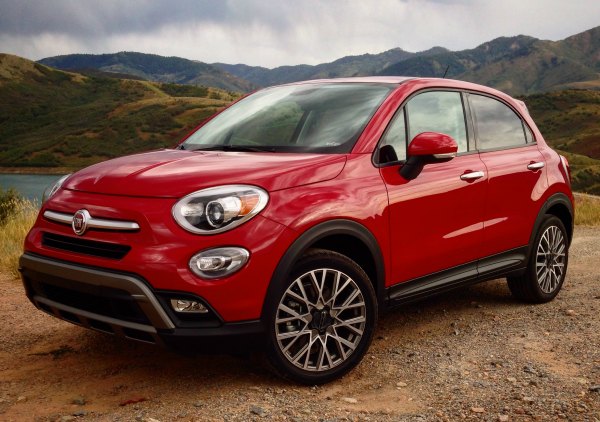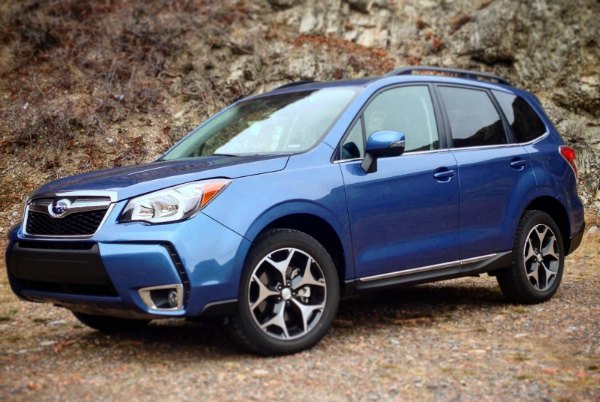I took a friend to lunch this week in the 2016 Dodge Journey. The first thing he says as he sits down is, “What’s the Journey? A minivan? A crossover? I’m not sure I’ve ever seen it before.”
That statement is both surprising and shocking given the fact that the Journey is Dodge’s best-selling crossover SUV and the 25th best-selling SUV in the United States through May 2016.
Let me tell you what I told my friend about the 2016 Dodge Journey, a vehicle that is far from the best in the crossover SUV category but still worth a look if you need three rows and you’re working with a limited budget.
Reason #1: 2016 Dodge Journey Has Space for Up To Seven Passengers
The Journey is built for families and is the only vehicle in its class to offer built-in, second-row booster seats that help ensure that seat belts rest correctly and safely across a young child’s lap and shoulders. If you’ve ever left a child’s booster seat in another car or in the house and didn’t discover your folly well into a family road trip, you’ll understand the convenience of integrated boosters.
Speaking of family, the 2016 Dodge Journey has space for all of ’em. With two adults in the front, three kids in the second row and two of their small buddies in the third row, you’ve got space to take seven people on that family road trip. Front seats are heated (you can also choose a heated steering wheel, too) and spacious though not exceptionally comfortable. The middle row is a good space for kids and adults while the third row is a natural habitat for young kids only. Legroom is tight!
If you have more gear than passengers, fold the seatbacks down and you have 67.6 cubic-feet of space. That’s enough to hold everything from some electric guitar cases to a bunch of suitcases or golf bags. Fold the front passenger seat flat and Dodge claims you can even stow a kayak in all that space.
Reason #2: Storage Space Nearly Everywhere
The Dodge Grand Caravan minivan offers one of my favorite features: Stow ‘n Go seats, which is a storage nook in front of the second-row seats that can swallow the entire seat and create a bunch of space. When empty, that space is a great place to stow valuables like tablet and notebook computers or treats for the kids.
The Journey follows the Caravan’s lead by offering storage space in places you expect and some you won’t. For instance, would you expect that you can fold the front passenger seat toward the dashboard to reveal space for smaller items like an iPad, cell phone, purses and wallets? It’s an available feature I put to good use. Or would you expect that directly behind the front seats are two storage bin in the floor that easily fit my notebook computer and small backpack? Drop the floor mats on top of the bins and no one knows the space even exists. And in the rear of the car, there is ample space to stow battery jumper cables or other tools to help you stay on the road.
Reason #3: Easy-to-Use Uconnect System
America’s Big-Three Automakers all have their own wrinkle on infotainment systems. Ford has the much-maligned MyFord Touch system. GM has a variety of touch-senstive systems with names like Cadillac CUE, GMC Intellilink and Chevrolet MyLink that place all kinds of climate, audio, navigation and app control at your fingertips. Choose a Dodge vehicle and you get the Uconnect system. Without a doubt, Uconnect is the easiest system to learn and easiest to operate of the bunch.
The standard 2016 Dodge Journey comes with a 4.3-inch digital screen that works well enough but is half the size and half as good as the 8.4-inch screen on the full Uconnect system. Nestled in the center console of my test car, it offered one-touch access to satellite/AM/FM radio, Bluetooth audio players and phones, climate and seat heating controls and navigation. Unlike many of the touch-sensitive systems in other vehicles, the Uconnect interface works clearly and simply.
Reason #4: Available V6 Engine
The Journey comes with a standard 2.4-liter 4-cylinder engine that makes 173 horsepower. That’s not much, and making matters even worse, it’s mated to an antiquated four-speed transmission. It should return a disappointing 19 mpg in the city and 26 on the highway. Car reviewers universally suggest you forego that option and choose the V6 engine that makes 283 horsepower and 260 pound-feet of torque. That’s a 100-horsepower difference and it makes a big difference in driving experience and overall performance. Here’s the good news: the more powerful V6 averages 17 mpg around town and 25 on the highway, so you’re paying a teeny-tiny penalty for better performance.
I averaged 17.8 driving the V6-powered version of the 2016 Dodge Journey during my week behind the wheel. Most of those miles occurred on the highway, so that fuel economy score is disappointing. The engine, however, made the drive so much better than the weak 2.4-liter 4-cylinder engine found in the base model of the Journey. If you’re interested in the Journey and plan to travel with a full load of passengers, I strongly encourage the upgrade to the V6 engine. It’s better to drive in nearly every way (with the exception of reduced fuel economy).
Reason #5: 2016 Dodge Journey is Most Affordable Midsize Crossover
The Journey is today’s most affordable midsize crossover and Dodge offers six versions to capture your needs and interests. The Dodge Journey AVP starts at $19,995 while the most expensive Journey R/T starts at $28,995.
All models earned “Good” safety scores from the Insurance Institute for Highway Safety (IIHS) and a four-star overall rating from the National Highway Traffic Safety Administration.
Good and Bad, Happy and Sad
I had no problem driving the Journey for a week. Given the fact I was driving the high-end Crossroad trim certainly helped matters. I can easily understand why more than 50,000 homes will find a place for the Journey in their garages this year. Yet I can also find good reasons to ignore the Journey and focus on other crossover SUVs, namely the poor fuel economy and dismal reliability scores.
At the very least, if you like the look of the Journey, try a test drive. It’s always the best way to determine if this vehicle — or any other — is worthy of your attention and hard-earned dollars.
